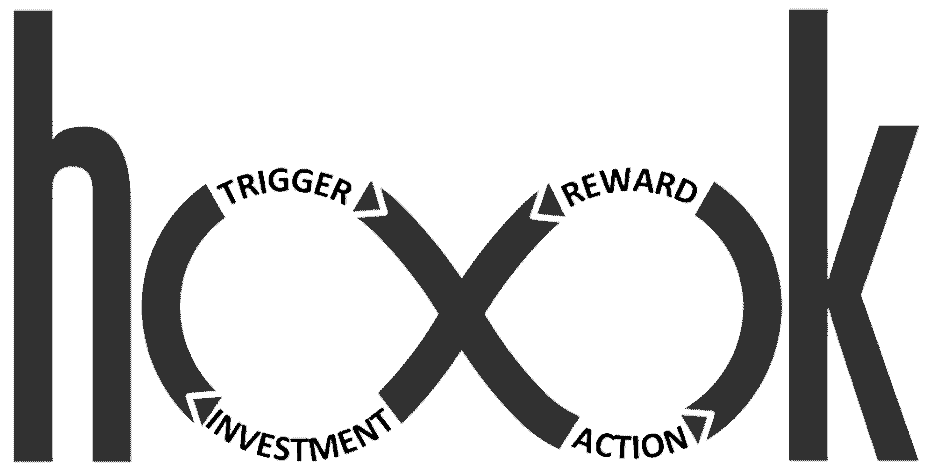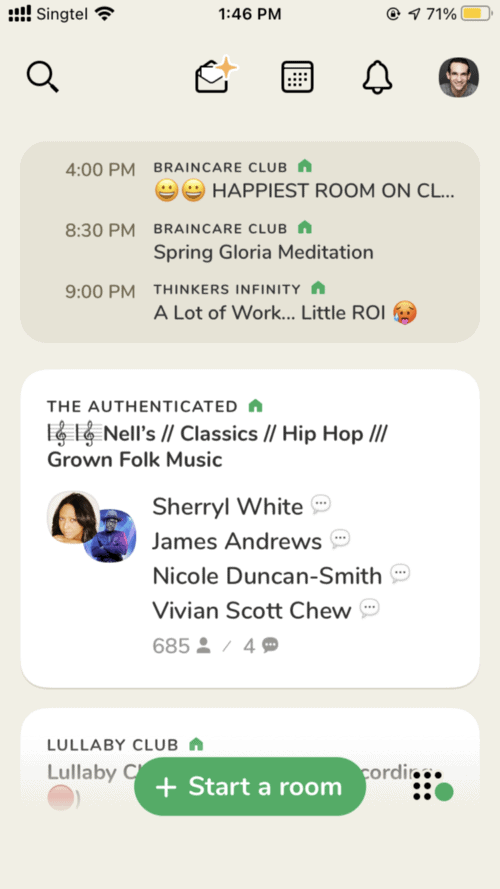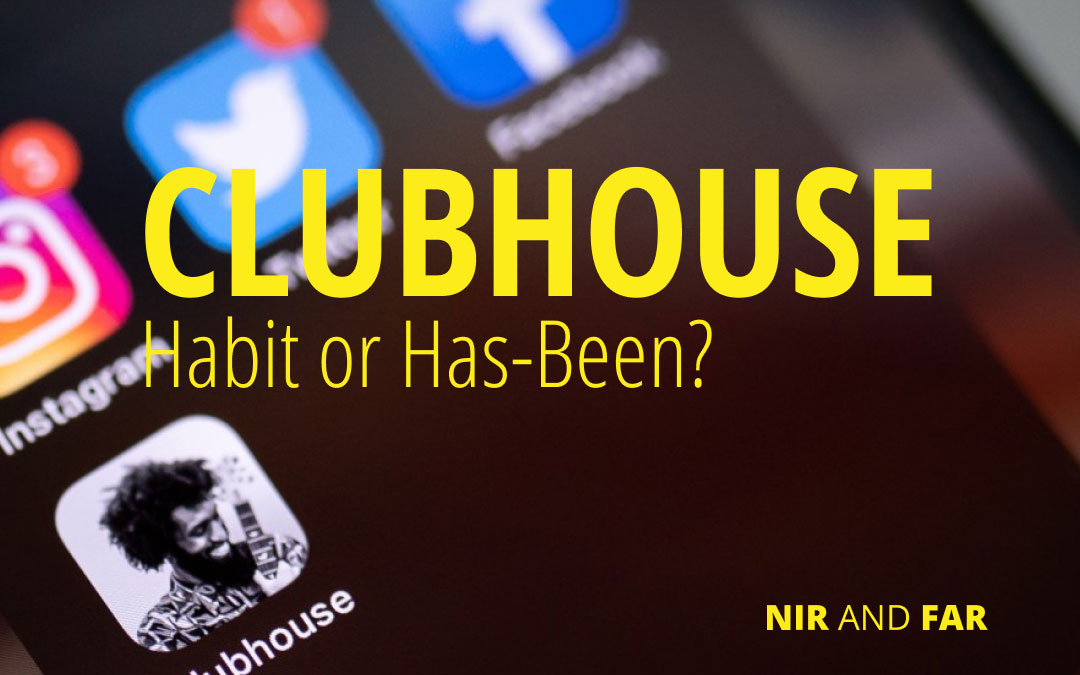Photo by William Krause on Unsplash
Maybe you’ve heard the buzz around Clubhouse, the drop-in audio chat app. It’s a bit like Twitch for conference calls. If you have no idea what “Twitch” is, you’re probably over 40. In your case, the closest analog might be those 1–900 party lines you saw advertised on late-night TV in the 1990s—but a bit less sleazy and in app form.
The Clubhouse app is the new new thing, and it’s got many people hooked. The app is the latest example of a habit-forming product taking the world by storm.
In 2014, I published my book, Hooked: How to Build Habit-Forming Products. My mission was to help people in all industries understand and apply the psychology of behavioral design to build the kinds of products that promote good habits in their users’ lives (think fitness and learning apps).
I wanted to share and democratize the techniques used by the world’s stickiest products, like Facebook, Twitter, and YouTube, so that anyone could build habit-forming products for good, rather than frivolity.
The book centers on my four-part Hooked Model below:

Trigger
A trigger actuates a behavior, like a spark plug in an engine. Triggers come in two types: external and internal.
Habit-forming products start by alerting users with external triggers. In this case, if you follow someone on Clubhouse, you’ll get a notification each time they start a chat. That’s the external trigger.
Internal triggers, which cue people to action through emotions rather than pings and dings, take time for users to incorporate into their own behavior as they continue using the product. I’ll get to those near the end of this article.
Action
The action follows the trigger. For Clubhouse, the desired action is dropping into a live conversation. Clubhouse makes it easy to take the habitual action: as soon as you open the app, the home screen shows you what’s happening right now. You’re only one click away from dropping in.

It’s very important for Clubhouse to make that experience frictionless because, for many of their users, Clubhouse replaces a pre-existing habit of listening to podcasts, scrolling social media, watching videos, or tuning into live terrestrial radio.
When you want to displace an existing habit, decreasing effort associated with the habitual action is crucial; the easier your desired behavior, the more likely people are to do it.
Clubhouse makes it easier to drop into a live discussion than previous options. If you’re using Clubhouse, you don’t have to go looking for podcasts or try to figure out which episodes are interesting. With one tap, you’re in.
Another key advantage of a product like Clubhouse is that it is hands-free, further reducing the friction associated with tuning into a live conversation. Unlike a YouTube video or a social media livestream (but like a podcast and radio), you can listen to a Clubhouse discussion while cooking, doing chores, or driving. Clubhouse makes hands-free use easier than other entertainment options that require you to look at a screen, and that encourages more people to take the desired action more often.
Probably the most important bit of behavioral design Clubhouse leverages is the element of time scarcity. Once you open Clubhouse, you’re dropped into conversations that are happening right now. Because the event is already in progress and won’t be available later, if you don’t tune in, you’ll miss it. The scarcity heuristic motivates action.
While the feeling of potentially missing out on something may get users to check the app more often at first, Clubhouse risks losing the habit. The app must ensure there are always enough interesting conversations happening around the clock. If the user can’t depend on the app to entertain them at any time, all the time, they’ll find another service that will. Building both sides of a synchronous content platform isn’t easy and it’s no coincidence that the major social networks have struggled with their livestreaming services (e.g. Facebook Live).
While the app is red hot at the moment as hosts try it out for the first time, the company risks losing listeners if they can’t keep enough of the interesting content airing live around the clock. Users will abandon the habit if it doesn’t give them the instant entertainment they’re looking for.
Variable Reward
Variable rewards are the rocket fuel powering the Hooked Model and driving user engagement. They’re also what distinguishes the Hooked Model from the average feedback loop.
Traditional feedback loops are everywhere, e.g., when you open your fridge, the fridge light turns on. This unsurprising result teaches you what to expect when you open the fridge door, but it doesn’t make you keep opening your fridge again and again. But imagine how you’d behave if a different treat magically appeared in your fridge every time you opened it. That’s a variable reward, and it’s incredibly intriguing.
On Clubhouse, the main reward mechanic is the reward of the hunt. The Twitter timeline is a familiar example of the same mechanic: it’s filled with a mix of mundane and relevant content, and on occasion, you’ll find a particularly interesting tweet. To keep hunting for information, you need to keep scrolling, and that’s why users scroll and scroll searching for that variable reward.
On Clubhouse, the reward of the hunt stems from uncertainty around what’s going to be said during the discussion. When the artist Beeple was about to sell his digital art for $69M via a non-fungible token, people tuned-in to Clubhouse in real-time for the surprise of what would happen next. How high would the price get? How would Beeple react to the news? People wanted to “be there when it happened,” so they could experience whatever would happen next.
Variable rewards entice us with uncertainty, and it’s an age-old technique used to keep us hooked. It’s the cliffhanger at the end of an episode of a great TV show. It’s what keeps us watching spectator sports. It’s what makes the news, new. It’s the heart of great literature. When we can’t exactly predict the outcome and want to know more, we pay attention.
Clubhouse also uses rewards of the tribe—validation that comes from other people. Our brains are adapted to seek rewards that make us feel accepted, attractive, important, and included.
When you listen in on Clubhouse, you have the opportunity to be with your tribe, i.e., people who share your interests. And when you raise your hand (virtually), you have the opportunity to interact with other people.
There’s variability around that. Will the host take my question? What do people think about my question? What will the speaker’s response be?
Even if you’re one of 1,000 people in a Clubhouse chat, there’s a chance you might get to participate, and that is a validating and variable experience you only get if you tune in.
One big question for Clubhouse is whether they’ll be able to keep the variable rewards coming. To keep users hooked, they’ll need to not only make sure lots of great stuff is happening on the platform whenever the user wants to tune in (per the Action Phase discussed earlier), but also ensure that the content is fresh, surprising, and variable. If the discussion turns dull and predictable, hosted by B-level moderators and less-than-stellar guests, the variability will be lost, the Hooked Model will break, and the habit won’t take.
Investment
The last phase of the Hooked Model involves the user putting in a bit of work. Specifically, you put something into the product that will make it better the more you use it. Investments include activities like inviting or following people, sharing your preferences and interests, or customizing the experience in any way.
On Clubhouse, every time you make or join a club, you’re investing in the platform: you’re telling the app something about your tastes, the topics you’re interested in, and the kind of people you’d like to hear from in the future. As a result, every time you open your home screen, it’s going to look different from my home screen. It’s personalized and tailored to your specific interests because you’ve invested in customizing the experience to your preferences. This is what I call “stored value” in my book, and it’s an incredibly important part of what makes products habit-forming.
Very few products get better the more you use them. Most products get worse: clothes, cars, kitchenware, and most other products depreciate with wear and tear. But habit-forming products should appreciate. They get better with use based on your investment into the platform.
Internal Triggers Cement the Habit
The more you go through the four steps of the Hooked Model, the more you begin to associate it not only with external triggers (notifications) but also with internal triggers.
Internal triggers are uncomfortable emotions we seek to escape. Once a product’s use is attached to a feeling, the habit is formed and external triggers are no longer required.
With Clubhouse, the internal trigger is boredom mixed with curiosity. A new product must capture existing customer habits, which is not easy to do. But once the user opens the Clubhouse app rather than listening to a podcast, scrolling social media, or watching TV, the new habit takes hold.
Will the Clubhouse Habit Hold?
Clubhouse follows a long list of companies who have tried (and mostly failed) to build a live-content streaming platform. The app is led by a stellar team and is backed by top-tier investors who gave the company a billion-dollar valuation at its last funding round. Expectations couldn’t be higher.
If Clubhouse succeeds, its competitive advantage will come from its habit-driven network effect. The more people tune in to the app, the more content creators it will attract, potentially locking out other apps vying for the same user habit and top talent.
The app clearly has its Hooked Model in place, but it’s unclear how long it can maintain the four critical components of its hook. The app’s greatest vulnerabilities lie in its ability to give users instant access to interesting content in the Action Phase, as well as keeping the Reward Phase of its Hooked Model variable enough with a constant stream of can’t-miss-content. If Clubhouse succeeds, it will forever change the media landscape, but if it can’t keep listeners hooked, it’ll be just another hot app has-been.
Related Articles
- Schedule Maker: a Google Sheet to Plan Your Week
- Cancel the New York Times? Good Luck Battling “Dark Patterns”
- How to Start a Career in Behavioral Design
- A Free Course on User Behavior
- User Investment: Make Your Users Do the Work
- Variable Rewards: Want To Hook Users? Drive Them Crazy
- The Hooked Model: How to Manufacture Desire in 4 Steps

